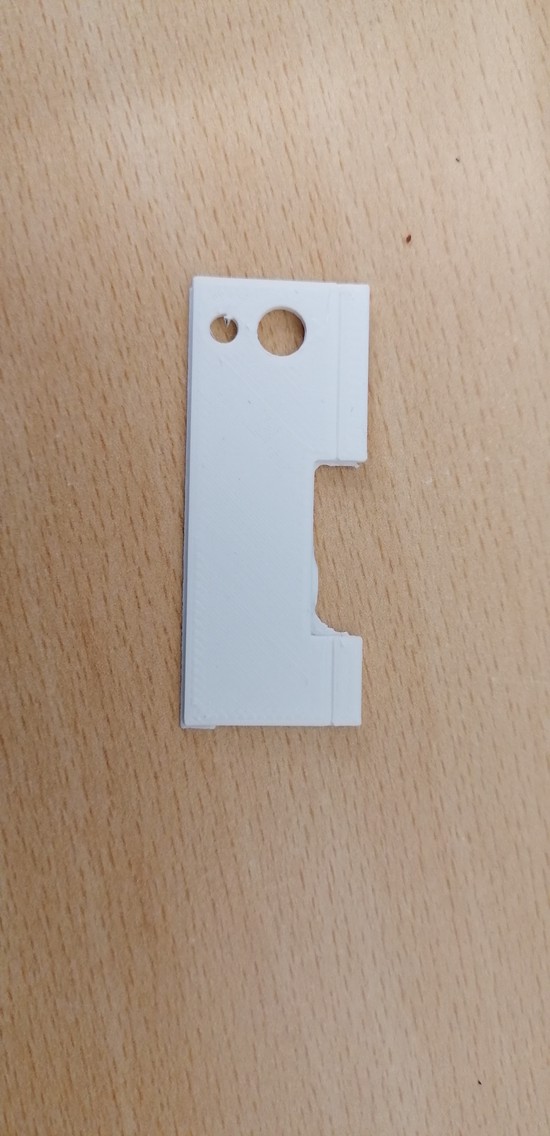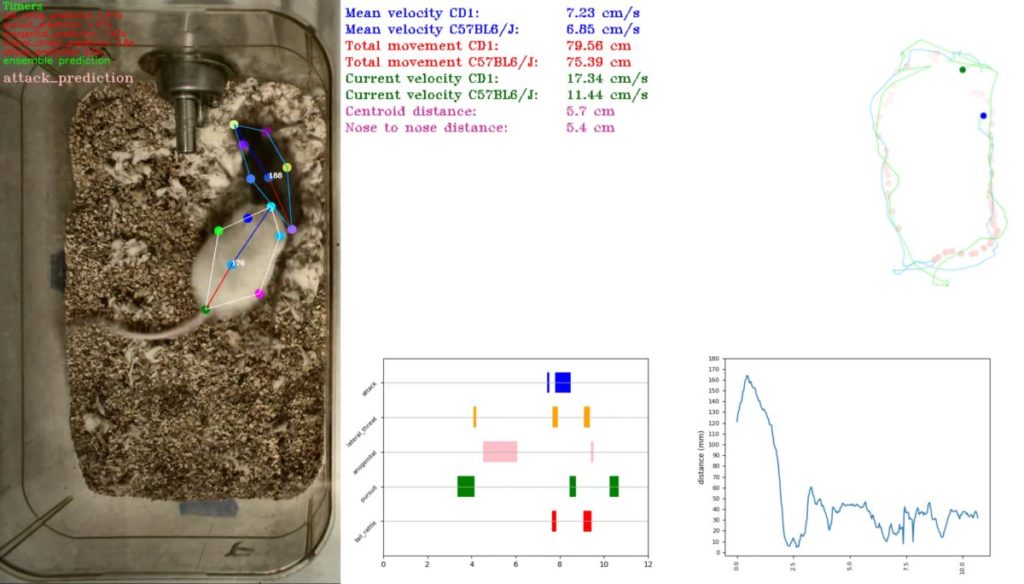What is the discussion?

https://hackaday.io/event/169511-open-source-neuroscience-hardware-hack-chat
Open-Source Neuroscience Hardware Hack Chat
Lex Kravitz and Mark Laubach will host the Hack Chat on Wednesday, February 19, 2020 at noon Pacific Time. Time zones got you down? Here's a handy time converter! Unless, of course, you look inward to the most wonderfully complex structure ever found: the brain.
 Open source tools and neuroscience, and the OpenBehavior project
Open source tools and neuroscience, and the OpenBehavior project
 Excellent
Excellent
 Can everyone introduce themselves please
Can everyone introduce themselves please

 Im A Essa (discontinued Phd in AI) and software engineering bsc
Im A Essa (discontinued Phd in AI) and software engineering bsc
 I'm Mark Laubach. I am a neurobiologist, with lab at American University in DC. We study how decisions are made in the brain, and use a lot of custom made tech in our research.
I'm Mark Laubach. I am a neurobiologist, with lab at American University in DC. We study how decisions are made in the brain, and use a lot of custom made tech in our research.
 Yes, please, let's start. And welcome Mark and Lex!
Yes, please, let's start. And welcome Mark and Lex!


https://edspace.american.edu/openbehavior/category/all/
Most Recent Archives - OpenBehavior
Camera Control is an open-source software package written by postdoctoral fellow Gary Kane that allows video to be recorded in sync with behavior. The python GUI and scripts allows investigators to record from multiple imaging source camera feeds with associated timestamps for each frame.


https://www.youtube.com/watch?v=-SqlNx7wr0w

https://www.youtube.com/watch?v=Mv6wdF9Jt6k
 That's pretty cool
That's pretty cool
 Wow, that's exactly what I tried to design in my old job 20+ years ago! We wanted to track where a rat was pointing his nose. Machine vision just wasn't up to the task at the time
Wow, that's exactly what I tried to design in my old job 20+ years ago! We wanted to track where a rat was pointing his nose. Machine vision just wasn't up to the task at the time
 @Dan Maloney That was my Master's project in 1990! Did not work so well.
@Dan Maloney That was my Master's project in 1990! Did not work so well.


 how did you solve that? training etc?
how did you solve that? training etc?
 Intro for me (Charlie L aka CyberchuckTX)
Intro for me (Charlie L aka CyberchuckTX)
: lifelong geek/nerd/programmer interested in these topics.
 BTW, "openbehavior.org" times out when I try to access it ...
BTW, "openbehavior.org" times out when I try to access it ...


 🚀🚀🚀
🚀🚀🚀
 @Charlie Lindahl: Try https://edspace.american.edu/openbehavior/category/all/
@Charlie Lindahl: Try https://edspace.american.edu/openbehavior/category/all/
 All this is all good, but what are you trying to achieve with all of this?
All this is all good, but what are you trying to achieve with all of this?

 Hi folks!
Hi folks!
so happy to see open source tools for neuroscience being highlighted here!
intro: I work at the university of Sussex and have been advocating for the use of open source tools for neurosciences for almost a decade now (almost as long as Iṽe been in neurosciences :P )
![]() Hi there! Thanks Lex and Mark for sharing your time with us. I've been checking out your projects, and find your field of work incredibly interesting. I was wondering... How different is electronic equipment used to analyze the spikes of different electrode interfaces? (EEG vs ECG vs EMG... be it through implants, skin contact...) Do they all use similar combinations of amplifiers+filters+DAC, and differ only at the physical connection with the body? Or do they require different designs/methodologies for data adquisition and processing?
Hi there! Thanks Lex and Mark for sharing your time with us. I've been checking out your projects, and find your field of work incredibly interesting. I was wondering... How different is electronic equipment used to analyze the spikes of different electrode interfaces? (EEG vs ECG vs EMG... be it through implants, skin contact...) Do they all use similar combinations of amplifiers+filters+DAC, and differ only at the physical connection with the body? Or do they require different designs/methodologies for data adquisition and processing?

 @Essaamar and others: Maybe this will help...
@Essaamar and others: Maybe this will help...
As a consequence of making tools and running OpenBehavior, we also wrote an article about open source tools and the need to make it easy to publish them and track their use. Check it out:
https://www.eneuro.org/content/6/4/ENEURO.0223-19.2019
 here is some work some communities are doing tthat is related to neuro/openhardware
here is some work some communities are doing tthat is related to neuro/openhardware

OPEN SOURCE SUSSEX NEUROSCIENCE
Open Source Sussex Neuroscience
Open source hardware project from the department of Neurosciences at Sussex University
Read this on Open Source Sussex Neuroscience
 @Lex Kravitz Thanks! also thanks for putting together open behavior!
@Lex Kravitz Thanks! also thanks for putting together open behavior!
 hi @Mark Laubach ! Thanks to you too for putting these things out there :)
hi @Mark Laubach ! Thanks to you too for putting these things out there :)

 Thanks @Andre Maia Chagas. Special thanks is also due to Samantha White and Linda Amarante, who have written most of the posts and posted the Tweets.
Thanks @Andre Maia Chagas. Special thanks is also due to Samantha White and Linda Amarante, who have written most of the posts and posted the Tweets.

 Do you guys get a lot of projects on open behavior that is not from people in universities?
Do you guys get a lot of projects on open behavior that is not from people in universities?
 @Andre Maia Chagas For the most part, no. But we did post last week about some projects on Hackaday.io that are in development and could be useful for things like teaching in high school biology.
@Andre Maia Chagas For the most part, no. But we did post last week about some projects on Hackaday.io that are in development and could be useful for things like teaching in high school biology.

 ok, I wish we could come up with a way to make this academic barrier smaller/non-existent. There is so much knowledge in non-academic communities, I think everyone ends up losing by not having closer collaborations.
ok, I wish we could come up with a way to make this academic barrier smaller/non-existent. There is so much knowledge in non-academic communities, I think everyone ends up losing by not having closer collaborations.
 I'm hoping to be able to do some DIY work for a dear friend of mine who recently had a terrible accident that rendered him (mostly) paraplegic. He's an engineer by trade so he's vitally interested in anything that could help him interface to the outside world.
I'm hoping to be able to do some DIY work for a dear friend of mine who recently had a terrible accident that rendered him (mostly) paraplegic. He's an engineer by trade so he's vitally interested in anything that could help him interface to the outside world.
 For us, the challenge is to get researchers to live by this principle: Don't let tools drive your research questions. Make your own tools to solve the problems that you are interested in. This applies to research labs as well as teaching and many other endeavors.
For us, the challenge is to get researchers to live by this principle: Don't let tools drive your research questions. Make your own tools to solve the problems that you are interested in. This applies to research labs as well as teaching and many other endeavors.

 @Charlie Lindahl sorry to hear that... Don't know if it was already mentioned, but look into openbci and openbionics ()
@Charlie Lindahl sorry to hear that... Don't know if it was already mentioned, but look into openbci and openbionics ()
 @Charlie Lindahl Sorry also. There is a field called Brain-Computer Interfaces that is intended to address those kinds of issues. Unfortunately, most of it is not open source.
@Charlie Lindahl Sorry also. There is a field called Brain-Computer Interfaces that is intended to address those kinds of issues. Unfortunately, most of it is not open source.
 And @Andre Maia Chagas is spot on with those projects.
And @Andre Maia Chagas is spot on with those projects.
 I left research on what was called BMIs at the time due to closed thinking in the early research community. Closed and competitive.
I left research on what was called BMIs at the time due to closed thinking in the early research community. Closed and competitive.
 BMI?
BMI?
 Brain Machine Interface
Brain Machine Interface
 Brain machine interface?
Brain machine interface?
 Yes some scientist has already hacked the brain
Yes some scientist has already hacked the brain
 OK
OK
![]() Closed and competitive? What does that mean?
Closed and competitive? What does that mean?
 idea was to hook up neurons to control devices
idea was to hook up neurons to control devices
![]() @Mark Laubach do I guess correcty that most of the magic is in the signal evaluation, while the collection of signals for control of the mechatronics is rather routine?
@Mark Laubach do I guess correcty that most of the magic is in the signal evaluation, while the collection of signals for control of the mechatronics is rather routine?
 no sharing of results, methods, code; venture firms offering lunch
no sharing of results, methods, code; venture firms offering lunch
 @Thomas Shaddack Signal processing and algorithms for decoding and control were/are not so easy given noisy neurons; biggest problem then, and maybe still now, was keeping electrodes viable long term
@Thomas Shaddack Signal processing and algorithms for decoding and control were/are not so easy given noisy neurons; biggest problem then, and maybe still now, was keeping electrodes viable long term
 Brain machine interface sounds a bit over the top if you have the nervus vagus
Brain machine interface sounds a bit over the top if you have the nervus vagus
 @Thomas Yes. The older work was targeting motor cortex.
@Thomas Yes. The older work was targeting motor cortex.
 well, I wouldn't go higher than the brain stem
well, I wouldn't go higher than the brain stem
 @Thomas and the fact that EEG can be used
@Thomas and the fact that EEG can be used
 hmmm... that's rather difficult, right?
hmmm... that's rather difficult, right?
 @Thomas Brain stem is hard because a lot of critical circuits pass through there; surgeries is a serious challenge
@Thomas Brain stem is hard because a lot of critical circuits pass through there; surgeries is a serious challenge
 I think implants would be best
I think implants would be best
![]() @Mark Laubach where is the main set of problems with the electrodes? the metal-neuron interface?
@Mark Laubach where is the main set of problems with the electrodes? the metal-neuron interface?
 true. the motor cortex would actually be safer
true. the motor cortex would actually be safer
 There was a group at IBM that was using EEG successfully to control simple circuits like light switches and toilets; simple problems that need to be addressed for independent living
There was a group at IBM that was using EEG successfully to control simple circuits like light switches and toilets; simple problems that need to be addressed for independent living
![]() @Mark Laubach i heard about some tricks with conductive polymers, forming around the cells.
@Mark Laubach i heard about some tricks with conductive polymers, forming around the cells.
 @Thomas Shaddack Glia growth limiting isolation of neurons
@Thomas Shaddack Glia growth limiting isolation of neurons

 Anyway... we don't really cover BCI/BMI on OpenBehavior
Anyway... we don't really cover BCI/BMI on OpenBehavior
 I think there are a couple of eeg/bci projects here on hackaday.io, no?
I think there are a couple of eeg/bci projects here on hackaday.io, no?
![]() Yes, I worked on some of the NeuroSky stuff, controlling fursuits. It was very unsuccessful.
Yes, I worked on some of the NeuroSky stuff, controlling fursuits. It was very unsuccessful.
![]() It's nowhere near precise enough and everything on the market uses more interpolation than actual data.
It's nowhere near precise enough and everything on the market uses more interpolation than actual data.
 @Chuck Glasser : how is that useful in what sense?
@Chuck Glasser : how is that useful in what sense?
 @Chuck Glasser Yes, drinking from a tube is a behavior, and understanding the decisions that lead to drinking now or later, or one fluid or another, are a major topic of work in the field
@Chuck Glasser Yes, drinking from a tube is a behavior, and understanding the decisions that lead to drinking now or later, or one fluid or another, are a major topic of work in the field

 I worked on an eeg to helicopter before in university, its very noisy
I worked on an eeg to helicopter before in university, its very noisy
 what is your experience with reproducibility of results with OSH compared to quality controlled commercial products? Any feedback from the scientific community on that?
what is your experience with reproducibility of results with OSH compared to quality controlled commercial products? Any feedback from the scientific community on that?
 @Lex Kravitz YES! Obesity, decision making, sensorimotor control.... all studied using simple behaviors like drinking fluid from a tube; and one of the most covered topics on OB
@Lex Kravitz YES! Obesity, decision making, sensorimotor control.... all studied using simple behaviors like drinking fluid from a tube; and one of the most covered topics on OB
 @Thomas The nice thing about OSH is that the papers that come out describing tools normally come with calibration protocols and specify equipment working limits, etc
@Thomas The nice thing about OSH is that the papers that come out describing tools normally come with calibration protocols and specify equipment working limits, etc
![]() I wish that EEs and technologists in general would come to appreciate the complecity of even the "simplest" of behaviors
I wish that EEs and technologists in general would come to appreciate the complecity of even the "simplest" of behaviors
 so you know quite well what you get/what you can do with it.
so you know quite well what you get/what you can do with it.
 why not reuse the terminal nerve https://en.wikipedia.org/wiki/Terminal_nerve (if it is a vetigial element) with an analog opto stimulator. You could have the light receptor just under the skin with a inductor to power the circuit... You could even embebed it in your glasses...
why not reuse the terminal nerve https://en.wikipedia.org/wiki/Terminal_nerve (if it is a vetigial element) with an analog opto stimulator. You could have the light receptor just under the skin with a inductor to power the circuit... You could even embebed it in your glasses...
 @Thomas not being snarky at all, but are there really quality controlled products in the neuroscience field? My dad did quality control for Ford Motor Co back in the day, and there is nothing in science vendor world like what auto companies did on the assembly line
@Thomas not being snarky at all, but are there really quality controlled products in the neuroscience field? My dad did quality control for Ford Motor Co back in the day, and there is nothing in science vendor world like what auto companies did on the assembly line

 On the topic of my friend's situation (he was already in a wheelchair before his accident) I ran into the "EyeDriveOMatic" projecst on Hackaday https://hackaday.com/2015/11/17/the-gaze-controlled-wheelchair-that-won-the-hackaday-prize/
On the topic of my friend's situation (he was already in a wheelchair before his accident) I ran into the "EyeDriveOMatic" projecst on Hackaday https://hackaday.com/2015/11/17/the-gaze-controlled-wheelchair-that-won-the-hackaday-prize/
![]()
 Dan Maloney
Dan Maloney

Discussions
Become a Hackaday.io Member
Create an account to leave a comment. Already have an account? Log In.